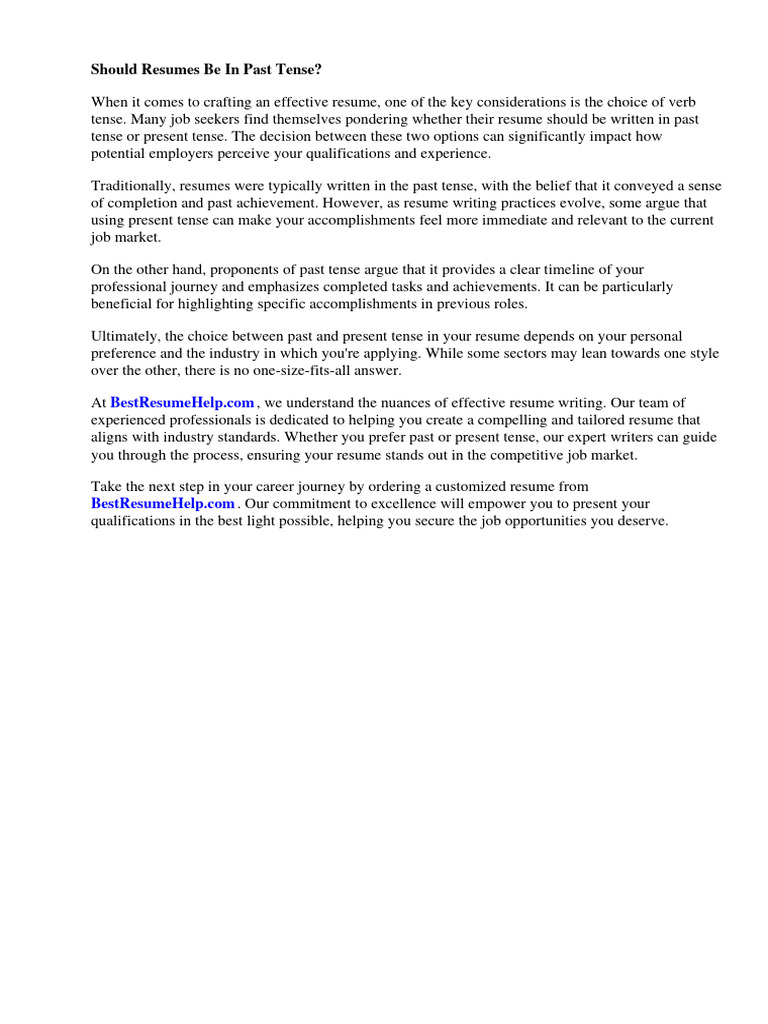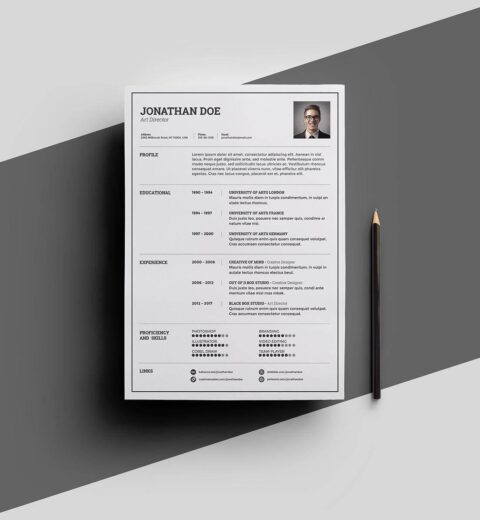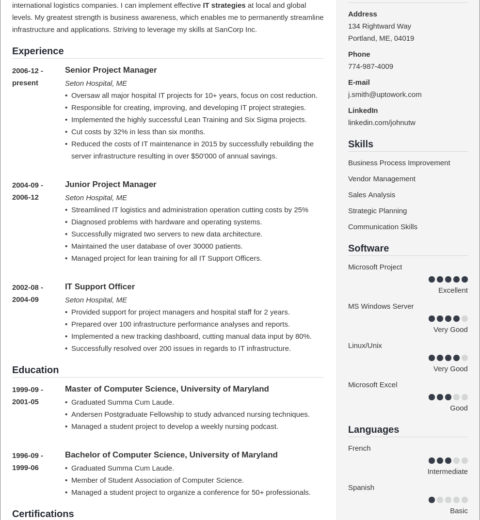When crafting a resume, one of the most often overlooked yet pivotal decisions revolves around the tense in which to present your professional experiences. The choice between past and present tense can significantly influence the effectiveness of your resume. As many job seekers grapple with this question, understanding not just the grammatical rules but also the implications of each choice can be essential for presenting oneself most favorably to potential employers.
The fundamental rule of thumb for resume writing dictates that past roles and responsibilities should typically be articulated in the past tense. For instance, if you once held a position as a marketing coordinator, you would describe your responsibilities and achievements as follows: “Developed and executed marketing strategies that increased brand awareness.” This approach delineates clearly that these experiences are not ongoing, thereby lending a sense of finality and accomplishment to your previous roles.
Conversely, current positions should be recounted in the present tense. By doing so, you maintain an accurate portrayal of your current responsibilities. For example, if you are presently a content manager, you would write, “Oversee content creation and ensure alignment with brand objectives.” This tense not only conveys immediacy but also allows hiring managers to grasp your active participation in these tasks.
However, the nuances of tense can become somewhat complicated in certain scenarios, particularly when one’s career path has been anything but linear. Take, for example, an individual who has transitioned through various roles within an organization. In such cases, it may be beneficial to employ a hybrid approach, utilizing past tense for roles that have concluded, while adopting present tense for ongoing responsibilities. This stratagem allows for clarity and precision, preventing any potential confusion about what is current versus what has transpired.
Another important consideration lies in the nature of your achievements. When highlighting accomplishments, even in roles that are ongoing, some candidates might choose to describe significant past achievements within a current position using the past tense. For example, “Increased sales by 30%,” while still in the role of sales director. This methodology can effectively showcase major contributions that stand out, providing measurable impact irrespective of the tense used.
Moreover, attention should also be paid to consistency throughout the document. A resume characterized by a haphazard mix of tenses can confuse hiring managers, projecting a lack of attention to detail—a trait that is particularly undesirable in any job candidate. Hence, maintaining uniformity in tense usage across different positions within the same section is crucial.
Furthermore, the industry or sector can influence tense choices, especially when navigating conventions associated with specific fields. In fields such as academia or research, for instance, present perfect tense may often be favored to emphasize the continuity of one’s work and the relevance of past findings to ongoing research. Here, one might say, “Have published multiple articles in peer-reviewed journals,” which not only indicates past achievements but also underscores their ongoing significance.
When tailoring your resume to meet the demands of specific job listings, scrutinizing the language used in the job description can be beneficial. If certain verbs and phrases appear predominantly in the present tense, consider mirroring this language to resonate more effectively with the reader. This nuanced adaptation demonstrates an active engagement with the job at hand and showcases your ability to align with the expectations of the hiring organization.
Importantly, while grammatical precision is certainly of paramount importance, readability and clarity should never be sacrificed in pursuit of perfection. Too much emphasis on rigid grammatical rules can lead to convoluted sentence structures that detract from the overall message. The primary objective should always be to communicate efficiently and effectively, guiding the reader seamlessly through your professional narrative.
In addition to grammar considerations, aesthetic layout and formatting also play a crucial role in resume effectiveness. Incorporating bullet points and clear headings can improve the document’s navigability. This organization not only enhances readability but allows hiring managers to quickly identify the most relevant information, further facilitating the hiring decision.
Lastly, soliciting feedback from trusted peers or mentors can provide invaluable insights into your resume. A fresh perspective might highlight areas for improvement or reaffirm your tense choices and overall presentation. Engaging in this collaborative process can cultivate a more polished and compelling document that captivates potential employers.
In conclusion, the discourse surrounding whether to use past or present tense is one steeped in nuance and intricacy. While traditional conventions suggest reserving the past tense for previous roles and the present tense for current positions, there exist exceptions and variations worthy of consideration. Ultimately, clarity, consistency, and relevance should reign supreme in the formulation of your resume. By adhering to these principles, candidates can ensure their professional narrative is both engaging and easily digestible, thus enhancing their attractiveness in a competitive job market.




